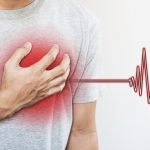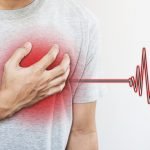I’ve always said that a single unhealthy meal won’t kill you–that it’s what you eat day-in, day-out, over months or years that ultimately takes you down. Well, a recent study, if it can be taken at face value, suggests I might have to modify that statement. The new message “might” be that while a single meal likely still won’t kill you, two, three, or four bad meals in a row just might. And yes, study aside, a bad diet consumed day-in, day-out over a course of years is still a bad bet. But let’s see how the study stands up to scrutiny.
It’s no secret that the medical community believes that the chronic consumption of meals rich in calories and saturated fat promotes obesity and adversely impacts cardiovascular health by initiating a cascade of inflammation, insulin resistance, oxidative stress, dyslipidemia (cholesterol imbalance), endothelial dysfunction, and atherosclerosis.1 Bornfeldt KE, Tabas I. “Insulin resistance, hyperglycemia, and atherosclerosis.” Cell Metab. 2011;14:575–85. http://www.ncbi.nlm.nih.gov/pmc/articles/PMC3217209/ Also, previous studies have indicated that, in humans, and depending on the fats involved, a single high-fat meal (HFM) can increase circulating lipids, inflammatory mediators, and free radical production, while activating inflammatory cells and provoking endothelial dysfunction (a condition in which the inner lining of the small arteries fails to function normally).2 Johnson BD, Padilla J, Harris RA, et al. “Vascular consequences of a high-fat meal in physically active and inactive adults.” Appl Physiol Nutr Metab. 2011;36:368–75. http://www.ncbi.nlm.nih.gov/pubmed/21574775 Indeed, consuming an HFM sufficient to promote lipemia (an abnormally high concentration of emulsified fat in the blood) has been reported to trigger acute coronary syndromes in patients with established atherosclerosis, likely in part through activation of inflammatory cells such as monocytes and macrophages. 3 Kalsch T, Elmas E, Nguyen XD, et al. “Alimentary lipemia enhances procoagulatory effects of inflammation in patients with a history of acute myocardial infarction complicated by ventricular fibrillation.” Int J Cardiol. 2008;123:131–7. http://www.ncbi.nlm.nih.gov/pubmed/17374548
Studies examining the impact of an HFM have previously focused heavily on inflammatory cells, which are all white cells.4 “The Inflammatory Cells.” Al Kindy Medical College. (Accessed 14 April 2018.) http://www.kmc.edu.iq/LionImages/PDFStore/inflammatory%20cells.pdf The erythrocyte (red blood cell, RBC), however, is the most abundant cell in the circulatory system (you have 25 trillion of them, and they affect every other cell in your body); on average, there are 700 RBCs for every circulating white blood cell. Although RBCs are widely recognized for their vital role in transporting and delivering oxygen to the tissues, they play a much broader role in cardiovascular pathophysiology. For example, RBCs regulate vascular function by releasing adenosine triphosphate (ATP) and modulating nitric oxide-dependent vasorelaxation.5 Ellsworth ML, Ellis CG, Goldman D, et al. “Erythrocytes: oxygen sensors and modulators of vascular tone.” Physiology. 2009;24:107–16. http://www.ncbi.nlm.nih.gov/pmc/articles/PMC2725440/ In addition, RBCs regulate the levels of key circulating chemokines (signaling proteins that attract white blood cells to the sites of infection). Moreover, the RBC membrane is host to myeloperoxidase (MPO) whose binding induces vascular remodeling and stiffness, and likely contributes to endothelial dysfunction.6 Adam M, Gajdova S, Kolarova H, et al. “Red blood cells serve as intravascular carriers of myeloperoxidase.” J Mol Cell Cardiol. 2014;74:353–63. http://www.ncbi.nlm.nih.gov/pubmed/24976018 , 7 Gorudko IV, Sokolov AV, Shamova EV, et al. “Binding of human myeloperoxidase to red blood cells: Molecular targets and biophysical consequences at the plasma membrane level.” Arch Biochem Biophys. 2016;591:87–97. http://www.sciencedirect.com/science/article/pii/S0003986115301181?via%3Dihub Notably, MPO is a potent inducer of oxidative stress via production of hypochlorous acid, and plasma levels of MPO have been positively linked to an increased risk of acute coronary syndromes in humans.8 Roman RM, Camargo PV, Borges FK, et al. “Prognostic value of myeloperoxidase in coronary artery disease: Comparison of unstable and stable angina patients.” Coron Artery Dis. 2010;21:129–36. http://www.ncbi.nlm.nih.gov/pubmed/20305551 However, the mechanisms that regulate circulating and RBC-bound MPO, until now, have been poorly understood. (We’ll talk more about MPO later, as it was a key area of focus in the study.)
With this background in mind, let’s now look at the recent study in question.

A single high-fat meal provokes pathological erythrocyte remodeling and increases myeloperoxidase levels: implications for acute coronary syndrome
Structurally, RBCs are composed of biconcave membranes that contain large amounts of cholesterol and avidly bind to lipoproteins, resulting in lipid transfer and membrane remodeling.9 Hui DY, Harmony JA. “Interaction of plasma lipoproteins with erythrocytes. I. Alteration of erythrocyte morphology.” Biochim Biophys Acta. 1979;550:407–24. http://www.ncbi.nlm.nih.gov/pubmed/217429 Moreover, RBC cholesterol levels, although they may not be directly responsible, are strongly and independently predictive of acute coronary syndromes in patients with angina.10 Tziakas DN, Chalikias GK, Stakos D, et al. “Independent and additive predictive value of total cholesterol content of erythrocyte membranes with regard to coronary artery disease clinical presentation.” Int J Cardiol. 2011;150:22–27. http://www.ncbi.nlm.nih.gov/pubmed/20223535 Previous studies by the same authors have reported that chronic high-fat feeding in mice induced structural, biochemical, and functional alterations in RBCs, suggesting a role for pathologically “remodeled” RBCs that may accentuate inflammation and vascular dysfunction.11 Unruh D, Srinivasan R, Benson T, et al. “Red blood cell dysfunction induced by high-fat diet: Potential implications for obesity-related atherosclerosis.” Circulation. 2015;132:1898–908. http://www.ncbi.nlm.nih.gov/pmc/articles/PMC4772773/ In the current study, the researchers sought to examine the effects of a single HFM, in comparison to a low-fat isocaloric meal (ICM)–in this case, consisting of a high carbohydrate cereal with the same number of calories but no fat–on RBCs in a cohort of young healthy adults.
The study was conducted by a team of researchers out of Augusta University in Georgia and published in the journal Laboratory Investigation.12 Benson, Tyler W., Weintraub, Neal L., Kim, Ha Won, et. al. “A single high-fat meal provokes pathological erythrocyte remodeling and increases myeloperoxidase levels: implications for acute coronary syndrome.” Laboratory Investigation. 23 March 2018. http://www.nature.com/articles/s41374-018-0038-3 Instead of looking at mice, it followed 10 apparently healthy, physically active male participants with no past medical history who were not taking any prescription medications. (Since estrogen is considered cardioprotective in non-obese premenopausal females, investigators opted to limit the study to males. We’ll touch on this later.) The protocol consisted of two testing visits separated by a minimum of 7 days. For each visit, all participants were instructed to report to the Laboratory of Integrative Vascular and Exercise Physiology at Augusta University following an overnight fast and abstaining from caffeine or strenuous physical activity for 24 hours, and vitamin supplementation for 72 hours, prior to the investigation.
They were then subjected to biochemical testing and assessment of FMD endothelial-dependent Flow-Mediated Dilation (a frequently used method for the assessment of endothelial dysfunction) before and after a single high fat meal consisting of a milkshake made with whole milk, heavy whipping cream, and ice cream or an isocaloric meal consisting of three big bowls of sugar-coated flakes with no-fat milk. The HFM meal contained about 80 grams of fat and 1,000 calories. The isocaloric cereal meal also contained about 1,000 calories but very little fat. Again, isocaloric simply means “having the same or a similar caloric value.”
Note: the next paragraph is quite technical but hang in there. I’ll translate it into English after we get everything out there.
The researchers found that following the HFM, triglyceride, cholesterol, and free fatty acid levels were all significantly increased, in conjunction with impaired post-prandial FMD. Additionally, peripheral blood smears demonstrated microcytes, remodeled RBCs, and fatty monocytes. Increased intracellular ROS (reactive oxygen species, more commonly known as oxygen-based free radicals) and nitration of protein band 3 was detected in RBCs following the HFM. The impaired FMD and oxidation of HDL were associated with HFM elevated plasma and RBC-bound myeloperoxidase (MPO). (It should be noted that monocytic cells (a type of leukemia cell) exposed to lipids in vitro release MPO, while porcine coronary arteries exposed to fatty acids ex vivo (ex vivo simply means experimentation on tissue taking place outside of an organism) took up MPO.) In this study, the researchers demonstrated in humans that a single HFM induces pathological RBC remodeling and concurrently elevates MPO, which can potentially enter the blood vessel wall to trigger oxidative stress and destabilize vulnerable plaques. As the researchers stated, “These novel findings may have implications for the short-term risk of HFM consumption and alimentary lipemia in patients with atherosclerosis.” Alimentary lipemia refers to the milky appearance of veins and arteries seen in the presence of abnormally high concentrations of lipids in the circulating blood.)
 Now, let’s translate this into English.
Now, let’s translate this into English.
A single high-fat milkshake, with a fat and calorie content like many rich restaurant dishes, can quickly transform healthy red blood cells into small, spiky cells that wreak havoc inside our blood vessels and help set the stage for cardiovascular disease. The red blood cells change size; they change shape; and they get smaller. Specifically, just four hours after consuming one of these “milkshakes of death,” the blood vessels of healthy young men are less able to relax, and they also have an immune response like one provoked by an infection.
 A single high-fat meal, with a fat and calorie content like many rich restaurant dishes, can quickly transform healthy red blood cells into small, spiky cells that wreak havoc inside your blood vessels and help set the stage for cardiovascular disease.
A single high-fat meal, with a fat and calorie content like many rich restaurant dishes, can quickly transform healthy red blood cells into small, spiky cells that wreak havoc inside your blood vessels and help set the stage for cardiovascular disease.
And speaking of the immune system, the researchers also found that there were changes in the white blood cell monocytes, which got fat themselves trying to take up the excessive fat circulating in the bloodstream from the meal. The researchers’ earlier studies demonstrated that these so-called foamy monocytes promote inflammation and show up in atherosclerotic plaque. Monocytes more typically travel the circulatory system looking for red blood cells that need elimination because they are old and/or diseased.
In conclusion, the researchers demonstrated for the first time in humans that a single HFM can induce pathological RBC remodeling and oxidative stress in conjunction with elevations in plasma and RBC-bound MPO. Remarkably, a single HFM was sufficient to promote MPO-mediated HDL oxidation. Together, these findings shed novel insight into the mechanisms whereby consumption of heavy meals enriched in fat may promote destabilization of vulnerable plaques leading to acute myocardial infarction–i.e., medical speak for a heart attack. It should be noted that the researchers only tested the participants after four hours, which is about how long it takes food to digest. That said, at least in mice studies, and in some of their other human studies, the unhealthy changes resolve in as little as eight hours–unless the high-fat eating continues. Perhaps, not surprisingly then, the researchers have previously shown that mice continuously fed a high-fat-diet experience permanent changes to their red blood cells and blood like those experienced transiently by the young men in the recent study. Changes include triggering a significant immune response that can contribute to vascular disease.
A key result in the study, noted above, is that in both the cells and blood, there was evidence of myeloperoxidase, or MPO, an enzyme expressed by a type of white blood cell which, at high levels in the blood, has been linked to stiff blood vessels, oxidative stress, and heart attack in humans. With that in mind, let’s take a closer look at myeloperoxidase.
Myeloperoxidase, or MPO
MPO is an enzyme that transforms low-density lipoprotein into atherogenic particles (particles that accumulate in blood vessels and block circulation). It is associated with both an impaired ability for blood vessels to dilate and the oxidation of HDL cholesterol, which converts this usually cardioprotective cholesterol into a contributor to cardiovascular disease. When taken up by a diseased artery, it can even destabilize plaque buildup, which can result in a stroke or heart attack. The bottom line is that the study found that myeloperoxidase levels in the blood are directly implicated in heart attacks. This both confirms and elaborates on previous studies, such as the 2003 study published in the New England Journal of Medicine, that found that even a single initial measurement of plasma myeloperoxidase independently predicts the early risk of a heart attack, as well as the risk of major adverse cardiac events over the next 1 to 6 months.13 Marie-Luise Brennan, Marc S. Penn, Frederick Van Lente, et al. “Prognostic Value of Myeloperoxidase in Patients with Chest Pain.” N Engl J Med 2003; 349:1595-1604. http://www.nejm.org/doi/full/10.1056/NEJMoa035003
MPO also impacts the cytoskeleton, the physical infrastructure of the usually plump red cells so they can’t function and flex as well. Or as Julia Brittain, one of the study’s authors says, “Your red blood cells are normally nice and smooth and beautiful, and the cells, after consumption of a high-fat meal, get these spikes on them. Much like huge ice chunks do to a river, these physical changes affect how blood flows.”14 Toni Baker. “Just one high-fat meal sets the perfect stage for heart disease.” Jagwire News. March 29, 2018. (Accessed 5 April 2018.) http://jagwire.augusta.edu/archives/52420 Bad changes occur quickly in these cells, which are “exquisitely sensitive” to their environment, Brittain says. To be sure, the researchers acknowledge that more studies are needed to see if changes in the red blood cell shape impact vascular health. But it’s not hard to see how the remodeled red blood cells themselves could be targeted for elimination by monocytes. In mice chronically fed a high-fat diet, these same researchers have seen red blood cells actively consumed by macrophages, resulting in inflammation.
Before we get too excited, let’s keep in mind that doctors really don’t understand food and diets. They may think they do, but they don’t. And it is that lack of understanding that leads to problems in many studies regarding the impact of diet on health–this one included.
My First Problem with the Study: High Glycemic Carbs
 I have talked before about how, by definition, medicine is “subtractive.” By subtractive, I mean that all medicine is based on the idea that you need to “subtract” out anything that is irrelevant until you can isolate the “one thing” left that “matters.” This approach works marvelously when testing for drugs because drugs are designed to be one-dimensional magic-bullets. And to be clear, all drug development, all drug patents, all efficacy testing are designed to reinforce this concept. But “subtraction” totally fails when used to test alternative therapies, which are holistic and “additive” by definition, which is why alternative therapies are usually administered as components in an overall protocol. And the same holds true for food, which is also holistic, additive, and multi-dimensional by nature. Rice bran, for example, contains over 100 antioxidants. Separating them out and testing each one in isolation will never tell you what rice bran does in your body.
I have talked before about how, by definition, medicine is “subtractive.” By subtractive, I mean that all medicine is based on the idea that you need to “subtract” out anything that is irrelevant until you can isolate the “one thing” left that “matters.” This approach works marvelously when testing for drugs because drugs are designed to be one-dimensional magic-bullets. And to be clear, all drug development, all drug patents, all efficacy testing are designed to reinforce this concept. But “subtraction” totally fails when used to test alternative therapies, which are holistic and “additive” by definition, which is why alternative therapies are usually administered as components in an overall protocol. And the same holds true for food, which is also holistic, additive, and multi-dimensional by nature. Rice bran, for example, contains over 100 antioxidants. Separating them out and testing each one in isolation will never tell you what rice bran does in your body.
Which brings us to the study at hand.
The researchers compared the effect of eating a high fat shake to the effect of eating a high-glycemic cereal–but only in subtractive terms. Setting aside the extreme nature of the “meals,” which is problematic in and of itself, the problem is that the researchers narrowed down the health comparison to only one concept: the effect of saturated fat on red blood cells. Everything else was subtracted out. So, what’s the problem?
Quite simply, food doesn’t work like that. Every food contains multiple biochemicals. (As just one example, milk contains over 400 individual fatty acids,15 “Milk Fat.” Milk Facts. (Accessed 15 Apr 2018.) www.milkfacts.info/Milk%20Composition/Fat.htm and you probably thought there was only one.) That means that, when it comes to health, every food has pros and cons. For example, if you’ve been paying attention to the news, you’ve heard about the California court case that just asserted that coffee causes cancer16 Gabrielle Levy. “California’s Coffee Warning Backfire?” US News World Report. April 10, 2018. (Accessed 15 Apr 2018.) http://www.usnews.com/news/national-news/articles/2018-04-10/could-californias-coffee-warning-backfire –except for the fact that numerous studies indicate that coffee is cancer protective. Why the discrepancy? Because the court case subtracted out every other component in coffee to focus on a single component, acrylamide, which has been shown in animal tests to cause cancer. But the reality is that this has only been demonstrated in animals and only at levels as much as 100,000 times higher than consumed by humans.17 Laura Geggel. “Despite Court Ruling, There’s No Certain Science Linking Coffee to Cancer.” LiveScience. March 30, 2018. (Accessed 14 April. 2018.) http://www.livescience.com/62177-california-coffee-cancer-warning.html When viewed holistically, the other components in coffee seem to more than compensate for the minimal amounts of acrylamide found in coffee–thus giving coffee it’s cancer protective effect.
So, when you look at the high fat shake and high carb cerealin holistic, additive terms rather than subtractive terms…
- With the caveat that I’m not a great fan of dairy for other reasons, a 2015 review published in the European Journal of Nutrition of the existing research on dairy fat concluded that people who eat full-fat dairy are no more likely to develop cardiovascular disease and type 2 diabetes than people who stick to low-fat dairy.18 Mario Kratz, Ton Baars, Stephan Guyenet. “The relationship between high-fat dairy consumption and obesity, cardiovascular, and metabolic disease.” European Journal of Nutrition. February 2013, Volume 52, Issue 1, pp 1–24. http://link.springer.com/article/10.1007%2Fs00394-012-0418-1 And when it comes to weight gain, the review found that full-fat dairy may actually be better for you.
- Now, as for high glycemic index carbs (HGI), they may not change the appearance of your red blood cells in four hours like fats. But rapidly digested carbohydrate foods–such as many white breads, refined breakfast cereals, processed snack foods, biscuits, and potatoes–have the potential to increase blood glucose levels. And over time, high levels of glucose are “toxic” to arteries.19 Akasaka T, Sueta D, Tabata N, et al. “Effects of the Mean Amplitude of Glycemic Excursions and Vascular Endothelial Dysfunction on Cardiovascular Events in Nondiabetic Patients With Coronary Artery Disease.” J Am Heart Assoc. 2017 Apr 26;6(5). pii: e004841. http://www.ncbi.nlm.nih.gov/pmc/articles/PMC5524064/ , 20 Sabina Sieri, Vittorio Krogh, Franco Berrino, et al. “Dietary Glycemic Load and Index and Risk of Coronary Heart Disease in a Large Italian Cohort: The EPICOR Study.” Arch Intern Med, 2010; 170 (7): 640-647. http://archinte.jamanetwork.com/article.aspx?articleid=225342 Not only do HGI carbs encourage plaque to form in arterial walls, they also cause inflammation that ages arteries, making them stiffer and less elastic, while also increasing the formation of blood clots. You just won’t see that happen in four hours. Curiously, this is especially true in women–who, as we mentioned earlier, were specifically excluded from the recent study.
My Second Problem with the Study: What It Didn’t Account For
There are three additional problems with making assumptions based on an ice cream shake as the exclusive meal of choice for the study.
- First, not all ice cream shakes are the same–even given the defining parameters of high saturated fat and 1,000 calories
- Other studies have vindicated saturated fat
- NEFAs
Not all ice cream shakes are the same
The shake was made with milk, ice cream, and heavy whipping cream. Were they from grass-fed cows? The study doesn’t say, but the answer is: highly unlikely. You’ll only find that in health food stores. Which brings up the question: does it matter? And the answer is: absolutely. The fat in dairy products changes composition depending on the diet of the cows. For example:
 Dairy products from grass-fed cows are high in natural CLA (conjugated linoleic acid); not so much with dairy from grain-fed cows. In fact, grass-fed dairy products are 3-5 times higher in CLA. CLA is a potent cancer fighter, but more to point, it has been found to lower LDL levels–so it matters in terms of the study results.
Dairy products from grass-fed cows are high in natural CLA (conjugated linoleic acid); not so much with dairy from grain-fed cows. In fact, grass-fed dairy products are 3-5 times higher in CLA. CLA is a potent cancer fighter, but more to point, it has been found to lower LDL levels–so it matters in terms of the study results.- Grass fed dairy is also high in alkylglycerols. Alkylglycerols are immune system supportive. But again, to point, alkylglycerols reduce systemic inflammation and modulate plasmogen levels, which can prevent atherosclerosis, thereby reducing cardiovascular disease risk.21 Aliki Rasmiena. “Assessment of the role of plasmalogen in the modulation of oxidative stress and inflammation in atherosclerosis.” The University of Melbourne. 2015. http://minerva-access.unimelb.edu.au/handle/11343/91500
- And once again, vitamin K2 levels are notably higher in grass-fed dairy. Vitamin K2 inhibits aortic calcification22 Wang Z, Wang Z, Zhu J1, Long X, Yan J. “Vitamin K2 can suppress the expression of Toll-like receptor 2 (TLR2) and TLR4, and inhibit calcification of aortic intima in ApoE-/- mice as well as smooth muscle cells.” Vascular. 2018 Feb;26(1):18-26. http://www.ncbi.nlm.nih.gov/pubmed/28587577 and reduces the risk of peripheral arterial disease.23 Vissers LET, Dalmeijer GW, Boer JMA, et al. “The relationship between vitamin K and peripheral arterial disease.’ Atherosclerosis. 2016 Sep;252:15-20. http://www.ncbi.nlm.nih.gov/pubmed/27494446 Quite simply, it reduces the risk of coronary heart disease.24 Geleijnse JM, Vermeer C, Grobbee DE, et al. “Dietary intake of menaquinone is associated with a reduced risk of coronary heart disease: the Rotterdam Study.” J Nutr. 2004 Nov;134(11):3100-5. http://www.ncbi.nlm.nih.gov/pubmed/15514282
So, does it matter? Absolutely, yes. Any one of these factors could actually be responsible for the problems seen in the study–not the saturated fat itself.
Other studies have vindicated saturated fat
As I have discussed previously, the initial studies used to brand saturated fat as harmful turned out to be seriously flawed. And more recent studies have come to quite different conclusions. Just last year in April of 2017, for example, a systematic review and meta-analysis of a number of observation studies published in the British Journal of Sports Medicine25 Aseem Malhotra, Rita F Redberg, Pascal Meier. “Saturated fat does not clog the arteries: coronary heart disease is a chronic inflammatory condition, the risk of which can be effectively reduced from healthy lifestyle interventions.” British Journal of Sports Medicine, April 2017. http://bjsm.bmj.com/content/early/2017/03/31/bjsports-2016-097285 showed no association, in healthy adults, between saturated fat consumption and:
- All-cause mortality
- Coronary heart disease (CHD)
- CHD mortality
- Ischemic stroke
- Type 2 diabetes
And if that’s not enough, a meta-analysis in the European Journal of Epidemiology published during the same month concluded that the saturated fats in milk and dairy products have no negative impact on cardiovascular health.26 Jing Guo, Arne Astrup, Julie A. Lovegrove, et al. “Milk and dairy consumption and risk of cardiovascular diseases and all-cause mortality: dose–response meta-analysis of prospective cohort studies.” European Journal of Epidemiology. April 2017, Volume 32, Issue 4, pp 269–287. http://link.springer.com/article/10.1007/s10654-017-0243-1
NEFAs
 NEFA stands for non-esterified fatty acids (or free fatty acids), which are an important metabolic fuel. (I’ve talked about them multiple times over the years.) Both the concentration of NEFAs and their flux through the circulatory system vary widely from hour to hour, reflecting your nutritional state and physical activity. That said, inappropriately elevated plasma NEFA concentrations have several adverse effects. Specifically, studies have shown that high fasting plasma NEFA concentration is an independent risk factor both for arterial inflammation27 Mas S, Martínez-Pinna R, Martín-Ventura JL, Pérez R, et al. “Local non-esterified fatty acids correlate with inflammation in atheroma plaques of patients with type 2 diabetes.” Diabetes. 2010 Jun;59(6):1292-301. Epub 2010 Mar 3.http://www.ncbi.nlm.nih.gov/pubmed/20200316 and sudden death from heart attacks.28 Xavier Jouven, Marie-Aline Charles, Michel Desnos, Pierre Ducimetière. “Circulating Nonesterified Fatty Acid Level as a Predictive Risk Factor for Sudden Death in the Population.” Circulation. 2001;104:756-761. http://circ.ahajournals.org/content/104/7/756.full And here’s the punchline: high levels of NEFAs in the blood are primarily driven, not by saturated fats, but by excess omega-6 fats in the body, which is caused by eating an overabundance of polyunsaturated fats such as corn, peanut, sunflower, and safflower oils — in other words, virtually every single bottled vegetable oil and processed food that the American Heart Association recommends as a healthy alternative to meat and dairy. It’s also the reason that taking omega-3 supplements lowers levels of NEFAs by bringing the omega-6 to omega-3 fatty acid levels back into balance.
NEFA stands for non-esterified fatty acids (or free fatty acids), which are an important metabolic fuel. (I’ve talked about them multiple times over the years.) Both the concentration of NEFAs and their flux through the circulatory system vary widely from hour to hour, reflecting your nutritional state and physical activity. That said, inappropriately elevated plasma NEFA concentrations have several adverse effects. Specifically, studies have shown that high fasting plasma NEFA concentration is an independent risk factor both for arterial inflammation27 Mas S, Martínez-Pinna R, Martín-Ventura JL, Pérez R, et al. “Local non-esterified fatty acids correlate with inflammation in atheroma plaques of patients with type 2 diabetes.” Diabetes. 2010 Jun;59(6):1292-301. Epub 2010 Mar 3.http://www.ncbi.nlm.nih.gov/pubmed/20200316 and sudden death from heart attacks.28 Xavier Jouven, Marie-Aline Charles, Michel Desnos, Pierre Ducimetière. “Circulating Nonesterified Fatty Acid Level as a Predictive Risk Factor for Sudden Death in the Population.” Circulation. 2001;104:756-761. http://circ.ahajournals.org/content/104/7/756.full And here’s the punchline: high levels of NEFAs in the blood are primarily driven, not by saturated fats, but by excess omega-6 fats in the body, which is caused by eating an overabundance of polyunsaturated fats such as corn, peanut, sunflower, and safflower oils — in other words, virtually every single bottled vegetable oil and processed food that the American Heart Association recommends as a healthy alternative to meat and dairy. It’s also the reason that taking omega-3 supplements lowers levels of NEFAs by bringing the omega-6 to omega-3 fatty acid levels back into balance.
There’s one other primary source of excess omega-6 fats in the diet: conventionally raised livestock, chicken, and fish that have been fattened on corn because corn is high in Omega 6 fatty acids. Ultimately the fat composition of these animals begins to reflect the fat composition of the foods they eat. Animals raised on corn have high omega-6 to omega-3 ratios. Livestock raised in nature, such as grass-fed beef, reflect an omega-6 to omega-3 ratio closer to 2:1. In other words, it’s not the saturated fat in these animals that is causing health problems; it’s the out-of-whack omega-6 to omega-3 ratios in those animal products. And that is true of dairy cows as well.
Milk fat has the most complex fatty acid composition of the edible fats. Over 400 individual fatty acids have been identified in milk fat. However, approximately 15 to 20 fatty acids make up 90% of the milk fat. The major fatty acids in milk fat are straight chain fatty acids that are saturated, monounsaturated fatty acids, and polyunsaturated fatty acids (i.e. omega-6 and omega-3 fatty acids).29 Milk Fat And now, here’s the key point regarding the study: milk products from corn fed animals are high in Omega-6 fats. In other words, the dairy products used in the study were likely high in NEFAs.
 Milk fat has the most complex fatty acid composition of the edible fats. Over 400 individual fatty acids have been identified in milk fat.
Milk fat has the most complex fatty acid composition of the edible fats. Over 400 individual fatty acids have been identified in milk fat.
Conclusion
So, what can we say we’ve learned from the study?
- Can we say that meals high in saturated fats cause heart attacks? Probably not. The study did not rule out other factors that may have been more culpable. And several meta studies have demonstrated they don’t.
- Can we say that saturated fats change our red blood cells? Again, because of the way the foods in the study were constructed, we can’t rule out other factors. And remember, the latest meta studies do not show any connection between dairy consumption and heart disease.
- And the same would be true of any changes to the immune system as indicated in the study.
But, all flaws aside, I’d have to agree with one key point: it’s probably not healthy to live on high-fat, ice cream shakes. But after that, any conclusions get a little dicer. And I certainly wouldn’t consider eating high-glycemic carbs as a “healthy option.” Once again, I think we see that Doctors Don’t Know Diets. The bottom line is to eat a modified Mediterranean Diet. And, then, anything that you do eat, eat in moderation.

References
| ↑1 | Bornfeldt KE, Tabas I. “Insulin resistance, hyperglycemia, and atherosclerosis.” Cell Metab. 2011;14:575–85. http://www.ncbi.nlm.nih.gov/pmc/articles/PMC3217209/ |
|---|---|
| ↑2 | Johnson BD, Padilla J, Harris RA, et al. “Vascular consequences of a high-fat meal in physically active and inactive adults.” Appl Physiol Nutr Metab. 2011;36:368–75. http://www.ncbi.nlm.nih.gov/pubmed/21574775 |
| ↑3 | Kalsch T, Elmas E, Nguyen XD, et al. “Alimentary lipemia enhances procoagulatory effects of inflammation in patients with a history of acute myocardial infarction complicated by ventricular fibrillation.” Int J Cardiol. 2008;123:131–7. http://www.ncbi.nlm.nih.gov/pubmed/17374548 |
| ↑4 | “The Inflammatory Cells.” Al Kindy Medical College. (Accessed 14 April 2018.) http://www.kmc.edu.iq/LionImages/PDFStore/inflammatory%20cells.pdf |
| ↑5 | Ellsworth ML, Ellis CG, Goldman D, et al. “Erythrocytes: oxygen sensors and modulators of vascular tone.” Physiology. 2009;24:107–16. http://www.ncbi.nlm.nih.gov/pmc/articles/PMC2725440/ |
| ↑6 | Adam M, Gajdova S, Kolarova H, et al. “Red blood cells serve as intravascular carriers of myeloperoxidase.” J Mol Cell Cardiol. 2014;74:353–63. http://www.ncbi.nlm.nih.gov/pubmed/24976018 |
| ↑7 | Gorudko IV, Sokolov AV, Shamova EV, et al. “Binding of human myeloperoxidase to red blood cells: Molecular targets and biophysical consequences at the plasma membrane level.” Arch Biochem Biophys. 2016;591:87–97. http://www.sciencedirect.com/science/article/pii/S0003986115301181?via%3Dihub |
| ↑8 | Roman RM, Camargo PV, Borges FK, et al. “Prognostic value of myeloperoxidase in coronary artery disease: Comparison of unstable and stable angina patients.” Coron Artery Dis. 2010;21:129–36. http://www.ncbi.nlm.nih.gov/pubmed/20305551 |
| ↑9 | Hui DY, Harmony JA. “Interaction of plasma lipoproteins with erythrocytes. I. Alteration of erythrocyte morphology.” Biochim Biophys Acta. 1979;550:407–24. http://www.ncbi.nlm.nih.gov/pubmed/217429 |
| ↑10 | Tziakas DN, Chalikias GK, Stakos D, et al. “Independent and additive predictive value of total cholesterol content of erythrocyte membranes with regard to coronary artery disease clinical presentation.” Int J Cardiol. 2011;150:22–27. http://www.ncbi.nlm.nih.gov/pubmed/20223535 |
| ↑11 | Unruh D, Srinivasan R, Benson T, et al. “Red blood cell dysfunction induced by high-fat diet: Potential implications for obesity-related atherosclerosis.” Circulation. 2015;132:1898–908. http://www.ncbi.nlm.nih.gov/pmc/articles/PMC4772773/ |
| ↑12 | Benson, Tyler W., Weintraub, Neal L., Kim, Ha Won, et. al. “A single high-fat meal provokes pathological erythrocyte remodeling and increases myeloperoxidase levels: implications for acute coronary syndrome.” Laboratory Investigation. 23 March 2018. http://www.nature.com/articles/s41374-018-0038-3 |
| ↑13 | Marie-Luise Brennan, Marc S. Penn, Frederick Van Lente, et al. “Prognostic Value of Myeloperoxidase in Patients with Chest Pain.” N Engl J Med 2003; 349:1595-1604. http://www.nejm.org/doi/full/10.1056/NEJMoa035003 |
| ↑14 | Toni Baker. “Just one high-fat meal sets the perfect stage for heart disease.” Jagwire News. March 29, 2018. (Accessed 5 April 2018.) http://jagwire.augusta.edu/archives/52420 |
| ↑15 | “Milk Fat.” Milk Facts. (Accessed 15 Apr 2018.) www.milkfacts.info/Milk%20Composition/Fat.htm |
| ↑16 | Gabrielle Levy. “California’s Coffee Warning Backfire?” US News World Report. April 10, 2018. (Accessed 15 Apr 2018.) http://www.usnews.com/news/national-news/articles/2018-04-10/could-californias-coffee-warning-backfire |
| ↑17 | Laura Geggel. “Despite Court Ruling, There’s No Certain Science Linking Coffee to Cancer.” LiveScience. March 30, 2018. (Accessed 14 April. 2018.) http://www.livescience.com/62177-california-coffee-cancer-warning.html |
| ↑18 | Mario Kratz, Ton Baars, Stephan Guyenet. “The relationship between high-fat dairy consumption and obesity, cardiovascular, and metabolic disease.” European Journal of Nutrition. February 2013, Volume 52, Issue 1, pp 1–24. http://link.springer.com/article/10.1007%2Fs00394-012-0418-1 |
| ↑19 | Akasaka T, Sueta D, Tabata N, et al. “Effects of the Mean Amplitude of Glycemic Excursions and Vascular Endothelial Dysfunction on Cardiovascular Events in Nondiabetic Patients With Coronary Artery Disease.” J Am Heart Assoc. 2017 Apr 26;6(5). pii: e004841. http://www.ncbi.nlm.nih.gov/pmc/articles/PMC5524064/ |
| ↑20 | Sabina Sieri, Vittorio Krogh, Franco Berrino, et al. “Dietary Glycemic Load and Index and Risk of Coronary Heart Disease in a Large Italian Cohort: The EPICOR Study.” Arch Intern Med, 2010; 170 (7): 640-647. http://archinte.jamanetwork.com/article.aspx?articleid=225342 |
| ↑21 | Aliki Rasmiena. “Assessment of the role of plasmalogen in the modulation of oxidative stress and inflammation in atherosclerosis.” The University of Melbourne. 2015. http://minerva-access.unimelb.edu.au/handle/11343/91500 |
| ↑22 | Wang Z, Wang Z, Zhu J1, Long X, Yan J. “Vitamin K2 can suppress the expression of Toll-like receptor 2 (TLR2) and TLR4, and inhibit calcification of aortic intima in ApoE-/- mice as well as smooth muscle cells.” Vascular. 2018 Feb;26(1):18-26. http://www.ncbi.nlm.nih.gov/pubmed/28587577 |
| ↑23 | Vissers LET, Dalmeijer GW, Boer JMA, et al. “The relationship between vitamin K and peripheral arterial disease.’ Atherosclerosis. 2016 Sep;252:15-20. http://www.ncbi.nlm.nih.gov/pubmed/27494446 |
| ↑24 | Geleijnse JM, Vermeer C, Grobbee DE, et al. “Dietary intake of menaquinone is associated with a reduced risk of coronary heart disease: the Rotterdam Study.” J Nutr. 2004 Nov;134(11):3100-5. http://www.ncbi.nlm.nih.gov/pubmed/15514282 |
| ↑25 | Aseem Malhotra, Rita F Redberg, Pascal Meier. “Saturated fat does not clog the arteries: coronary heart disease is a chronic inflammatory condition, the risk of which can be effectively reduced from healthy lifestyle interventions.” British Journal of Sports Medicine, April 2017. http://bjsm.bmj.com/content/early/2017/03/31/bjsports-2016-097285 |
| ↑26 | Jing Guo, Arne Astrup, Julie A. Lovegrove, et al. “Milk and dairy consumption and risk of cardiovascular diseases and all-cause mortality: dose–response meta-analysis of prospective cohort studies.” European Journal of Epidemiology. April 2017, Volume 32, Issue 4, pp 269–287. http://link.springer.com/article/10.1007/s10654-017-0243-1 |
| ↑27 | Mas S, Martínez-Pinna R, Martín-Ventura JL, Pérez R, et al. “Local non-esterified fatty acids correlate with inflammation in atheroma plaques of patients with type 2 diabetes.” Diabetes. 2010 Jun;59(6):1292-301. Epub 2010 Mar 3.http://www.ncbi.nlm.nih.gov/pubmed/20200316 |
| ↑28 | Xavier Jouven, Marie-Aline Charles, Michel Desnos, Pierre Ducimetière. “Circulating Nonesterified Fatty Acid Level as a Predictive Risk Factor for Sudden Death in the Population.” Circulation. 2001;104:756-761. http://circ.ahajournals.org/content/104/7/756.full |
| ↑29 | Milk Fat |











